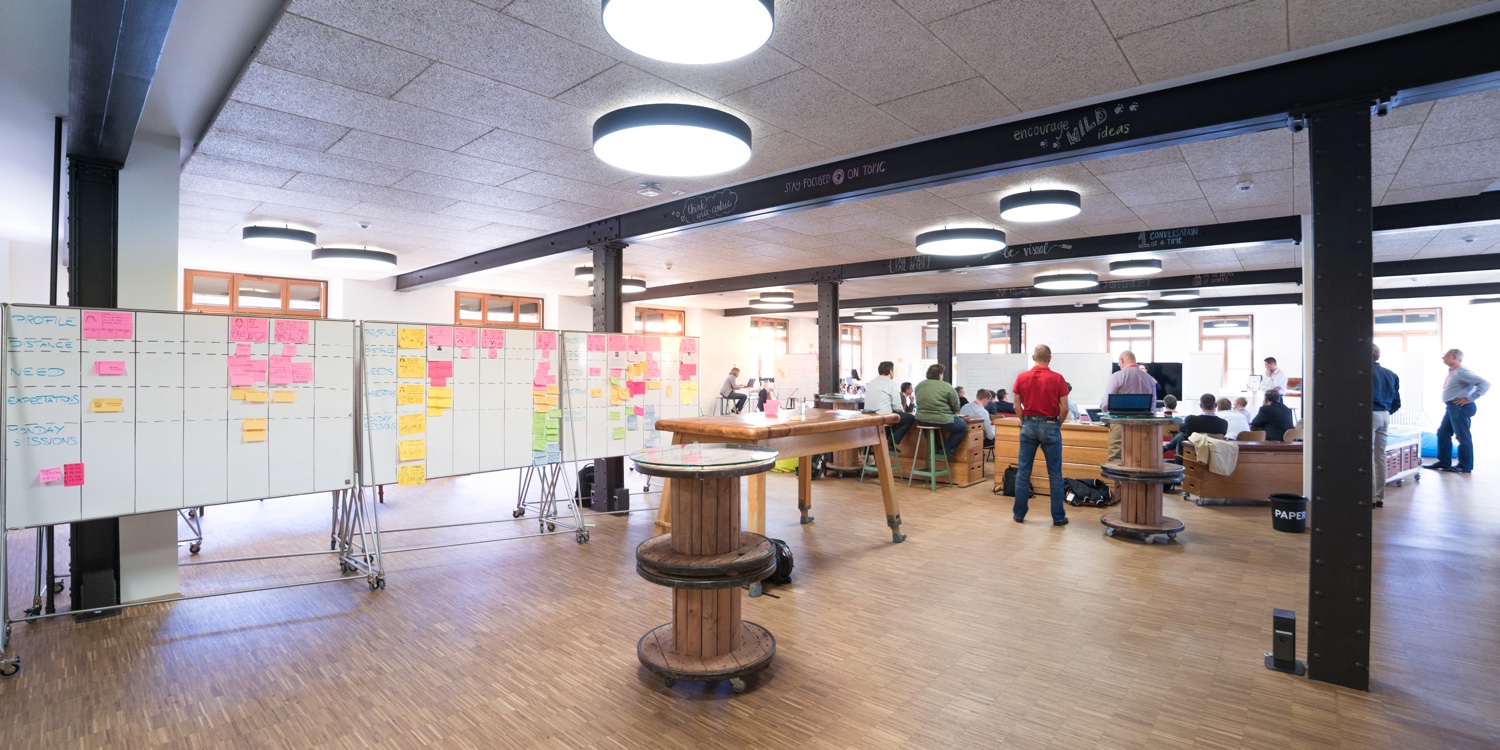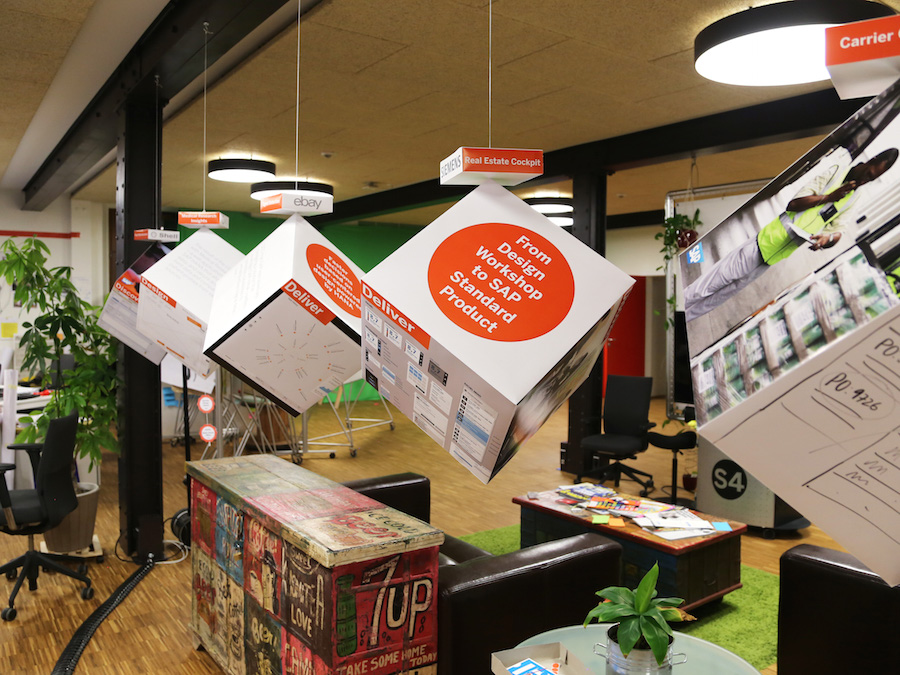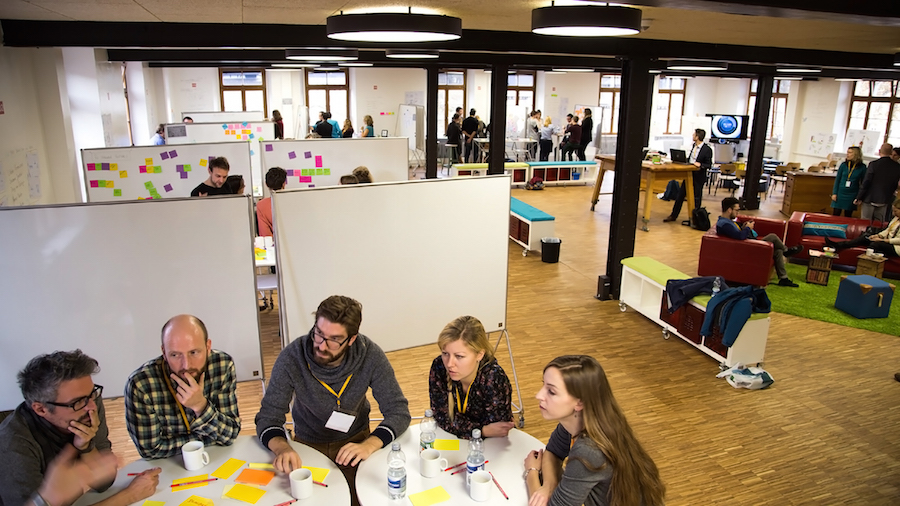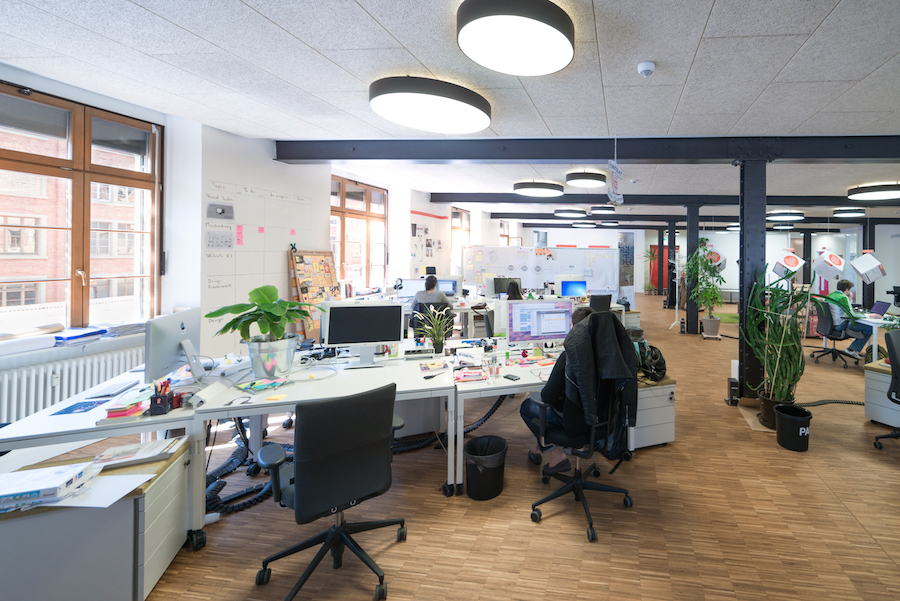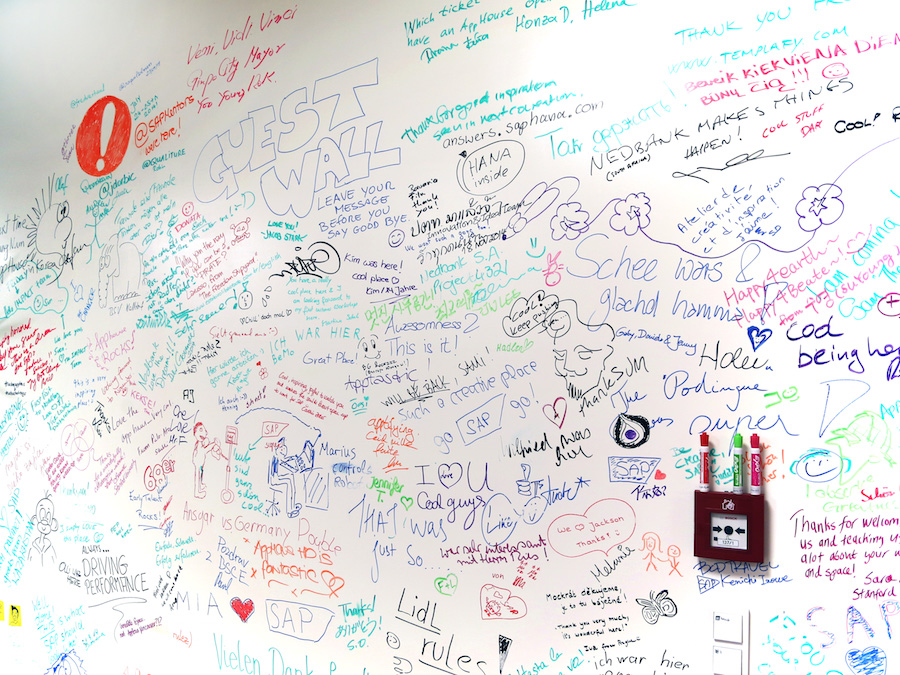As winner of the 2014 Design for Experience award for Experience Design Strategy, SAP’s Design & Co-Innovation Center based at the AppHaus in Heidelberg impressed judges with a novel approach to getting clients involved in the design process.
Inspired by the Bauhaus movement, which emphasizes the power of bringing different disciplines together, the SAP AppHaus Heidelberg leverages the psychology of space to create environments where innovation and collaboration can occur spontaneously through hands-on prototyping and experimentation.
Here, Ann-Sofie Ruf, working in Marketing & Communication at SAP’s Design & Co-Innovation Center, describes an element of their experience design strategy that keeps team members sharp and open to co-creation: Method Mondays.
Benjamin Franklin once said: “Tell me and I forget, teach me and I may remember, involve me and I learn.”
At the SAP Design & Co-Innovation Center (DCC) we frequently organize something called “Method Mondays,” a regular one-hour meeting series in which the team members share, practice, and test different methods to support our design work.
Here are the five most-effective methods we’ve found thusfar.
1. Brainstorming: the Walt Disney method
We love brainstorming, and the Walt Disney Method is a simple technique for everyone to take part in. It involves role-playing with three facets of Disney’s personality.
According to Robert B. Dilts, “there were actually three different Walts: the dreamer, the realist, and the spoiler.” So who are the three characters? The dreamer is a subjective and enthusiastic individual. His task is to think about the ideal way to answer the given challenge. The typical question for a dreamer is: “What can I do if everything is possible?” The realist is the pragmatic and practical thinker who wants to realize the dreamer’s ideas. His leading question is: “How can I do it?” The spoiler judges and provokes the ideas and gives positive feedback. He or she has to deal with the question “What can go wrong?”
In the role-playing exercise, you go through the different roles either on your own or in a group. Always spend about 15 minutes in each role and do several iterations. The number of iterations respective to the level of detail you want to dig into at each point.
2. Empathy Mapping
We are continuously looking for new methods. When we came across a new approach for clustering research results, we simulated a workshop situation in which the empathy map was used to cluster results based on what the interviewees had said and done—focusing on thoughts and feelings, pains and gains. We found the empathy map a great tool since it is applicable to every business and provides valuable insights about what customers and partners actually want—knowledge that is crucial for the success of your company.
It all begins with a large white poster and a sketch of a character’s head. Divide the poster into five sections that portray what the character sees, hears, thinks, and feels as well as the challenges the character faces. Ask the players of the game to change perspectives. Fill the map with results from real research about the persona’s experiences. This helps team members identify with the persona and project themselves onto it.
During the game, all players should write down their ideas about the targeted persona’s experiences on post-its and then stick them onto the respective section of the empathy map. Once it is complete, analyze the results in a team and think of ways to apply them to your service or product. Here’s a more detailed description and the online game.
3. Belbin Characters
Dr. Meredith Belbin found that when groups work together, there is always a set of nine characters: and each of them is essential for getting the group successfully from start to finish. This doesn’t mean that you need nine different individuals on your team, however, because even a single person may not necessarily behave the same way all of the time. Being able to identify the different characters in a project or the workplace and being able to adapt your own behavior to the strengths and weaknesses of your team can be a great advantage.
True to the Bauhaus style, we decided that everybody could share their favorite working methods
The nine roles can be divided into three orientations: act-oriented, subject-oriented, and communication-oriented. To run the exercise, we usually use the game “build a bridge.”
After splitting into groups of 4 to 6, we provide each group with a big stack of paper, a full half-liter bottle, and two tables or chairs as base for the bridge. The distance between the chairs or tables can vary from 50 centimeters to 1 meter. After 30 minutes of construction using paper, the bottle is placed on the bridge and supported for 20 seconds.
It is up to you if you want to distribute cards with the characteristics of each role at the beginning of the game so that the people behave according to their role, or if you want introduce the characters after the exercise. In both cases you end with a reflection on the people’s behaviors as they try to solve a problem together.
4. Remember the Future
“Remember the Future” is an easy game that helps us to better understand our customers’ definition of success and deepen their understanding of how to reach their goals. It centers on the question “What should your product do?” which is often trivially answered: “Our product should be better.” There are actually unlimited possible and plausible futures to think of and to answer the question together with your customers, give everyone a few pieces of paper and let them imagine they have been using their product continuously until some day in the future. Now ask them to write down as much as possible about what your product will have done to make them happy up to that point.
The results will change drastically depending on the wording of the question, so phrase it carefully. It’s quite unlikely that each customer will come up with the same imagined scenario. The true magic of the game is in the discussion about how your customers actually perceive their future. The next step is to compare current product development with the newfound perceptions of the future, looking for areas of possible improvement. For more details consult “Remember the Future. Understand Your Customers’ Definition of Success” in Luke Hohmann’s book: Innovation Games. Creating Breakthrough Product Through Collaborative Play.
5. A Day In the Life
We want to understand others better. As a combination of research and storytelling, the “Day in the Life” method is very valuable for gaining in-depth user insights. Designers are accustomed to observing individuals through a typical workday, recording their activities and taking notes about how they experience their environment. However, it’s not always possible to conduct deep field research, so we use the “Day in the Life” method as an alternative in the workshops we hold at AppHaus. We let customers recount their typical workdays while others take notes. Paying close attention to how people spend their time allows us to gather a realistic picture of their work settings.
Next, we cluster all the information we gathered about the daily routine and sort it on a timeline similar to a customer journey. Mapping a day in the life illustrates how time is assigned to different activities and helps identify obvious or potential problems at every single step. Lastly, we brainstorm ways for improving this daily sequence. “A Day in the Life” can be repeated over several days to get a balanced perspective. Customers might also present a typical week or any relevant time span.
Why the Methods Work
We’re open to more than just creativity methods and tools—we also test storytelling techniques, warm-ups, sketching, and psychology theories for group dynamics. Anything that might support us during our project work is highly welcome.
Our team at the Design & Co-Innovation Center is composed of members with a rich background in different disciplines of design, creativity, and psychology. True to the Bauhaus style, we decided that everybody could share their favorite working methods or new methods they would like to test. After each test, we sit together and discuss what we liked about the method, what we would change in the next attempt, and which scenarios would call for using the method.
It is a pleasure to have the freedom to pause normal project work and spend time with the colleagues on these activities. It helps us test and validate new methods and to make mistakes and learn from them. All of us grow through these experiences, and our knowledge is enriched every time we meet.


